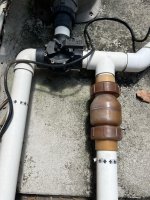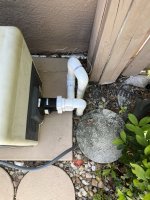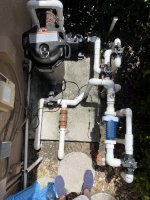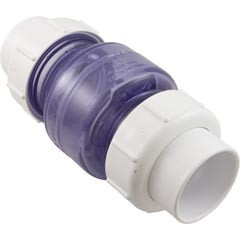So this is embarassing... I just realized after reading on this forum that there are union fittings(1.5" inside and 2" slip outside) that allow you to plumb a new pump into both a 1.5" system and a 2" system. Well.. after at least 4 years I realized I plumbed 1.5" into a 2" system. See attached pictures...
I recently added a Pentair Mastertemp heater and when I circulate through the heater I only get 4 of 6 jets blowing bubbles with good flow in the spa. This is what started me looking at restrictions in the system.
Is it worth buying new unions and coming strait out of the pump with 2" pipe? I'm guessing this could help with electrical bill and flow to the spa.
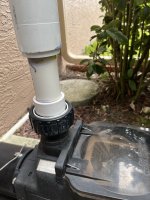
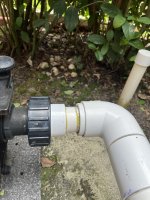
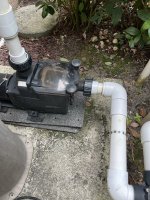
I recently added a Pentair Mastertemp heater and when I circulate through the heater I only get 4 of 6 jets blowing bubbles with good flow in the spa. This is what started me looking at restrictions in the system.
Is it worth buying new unions and coming strait out of the pump with 2" pipe? I'm guessing this could help with electrical bill and flow to the spa.





 Before you go cutting, please post a couple more pics of the entire pad so we can see all the PVC runs. It may make a difference. I'll ask
Before you go cutting, please post a couple more pics of the entire pad so we can see all the PVC runs. It may make a difference. I'll ask 